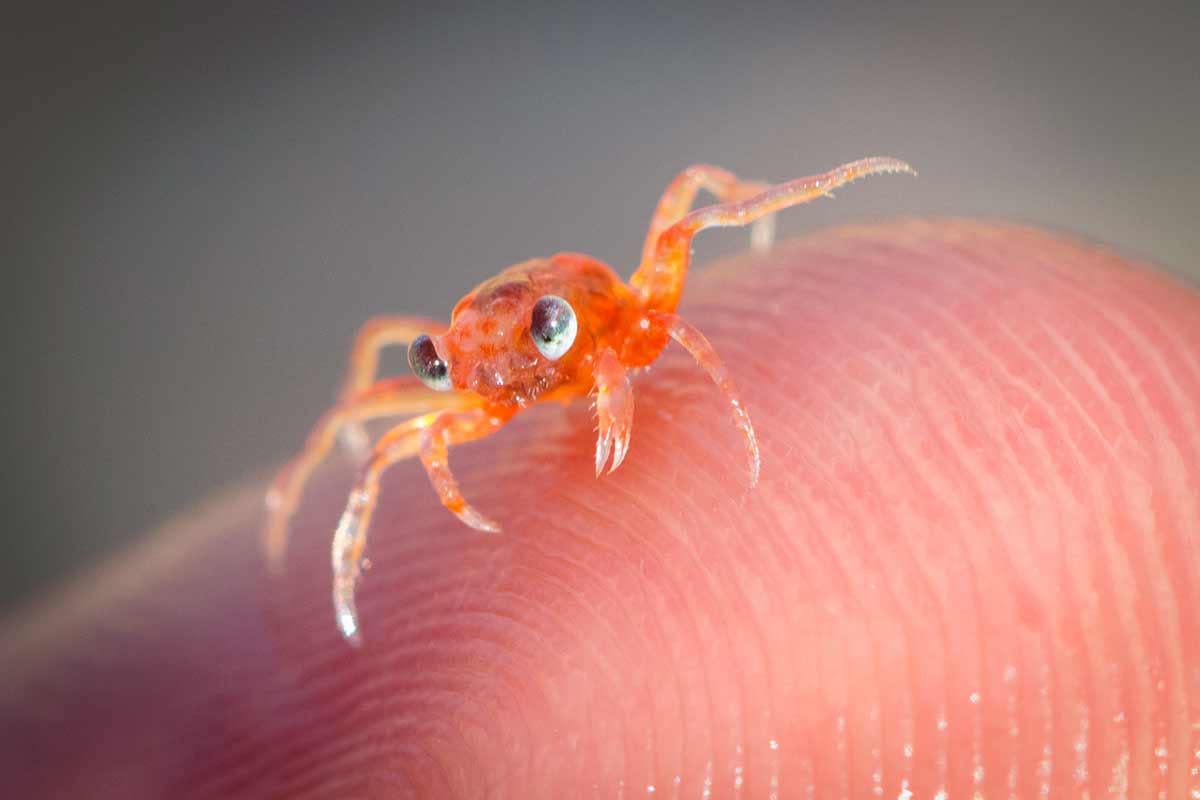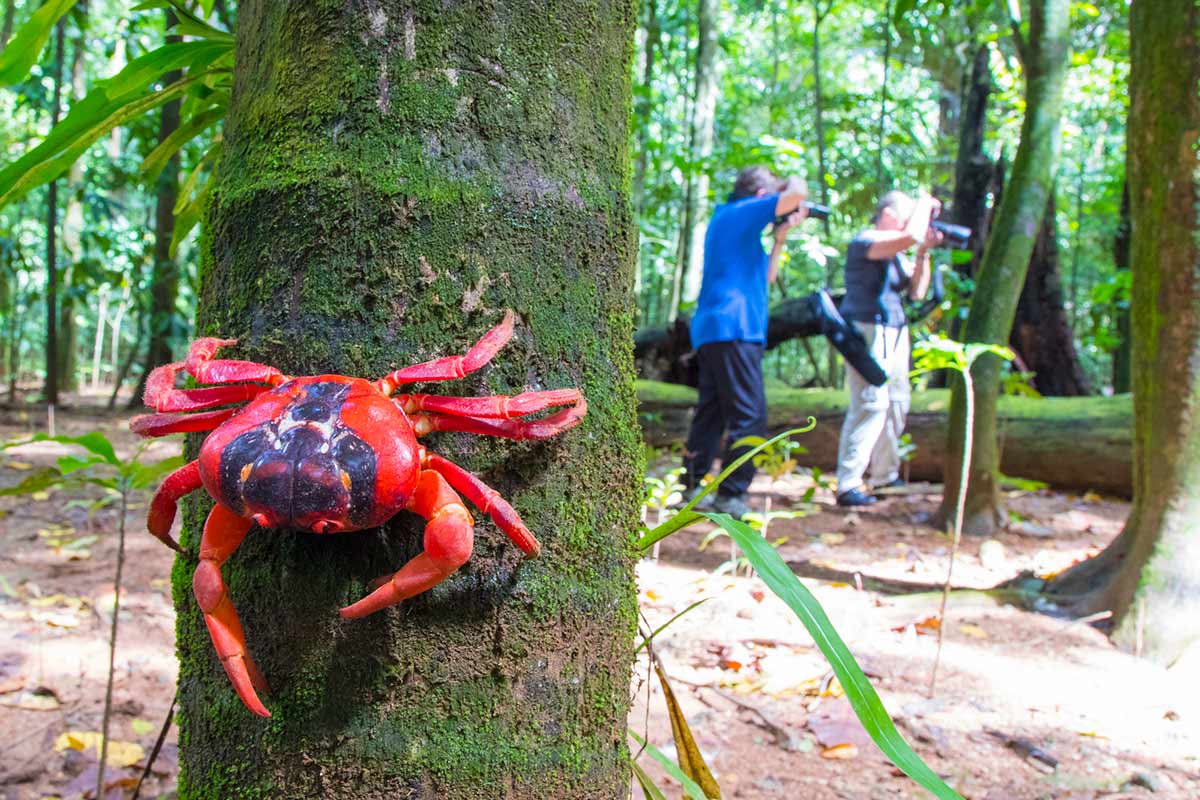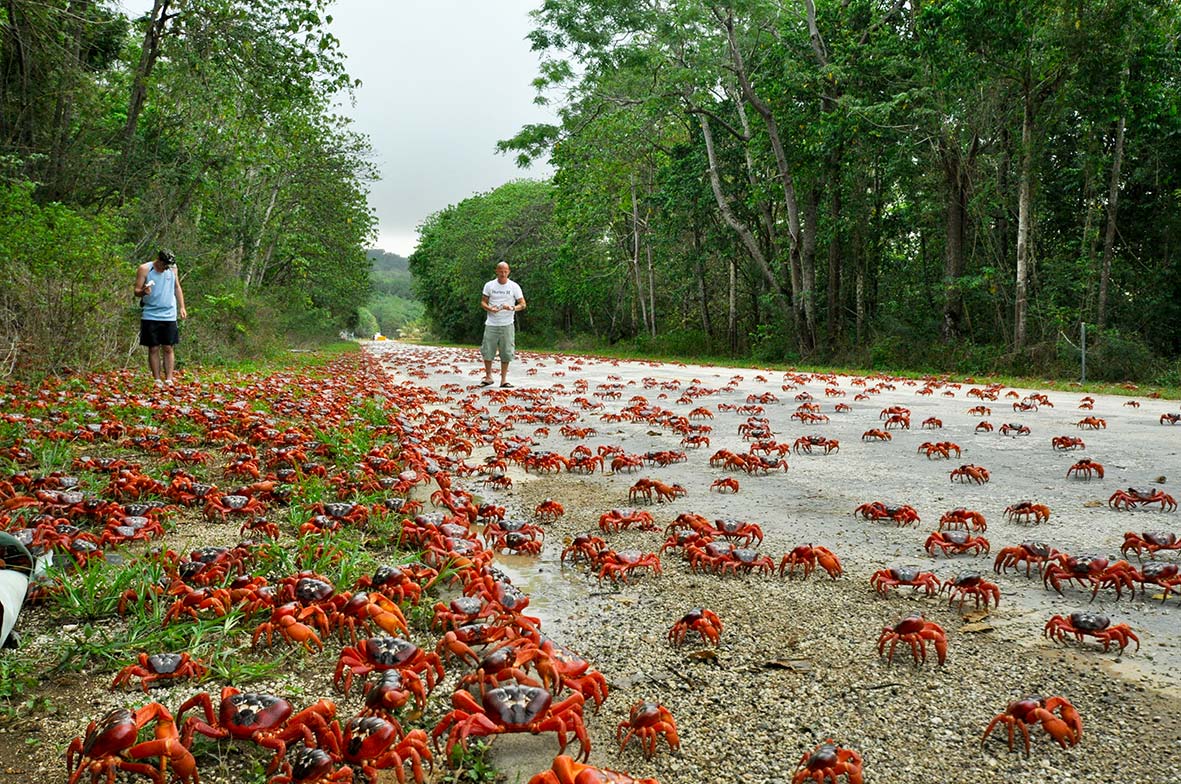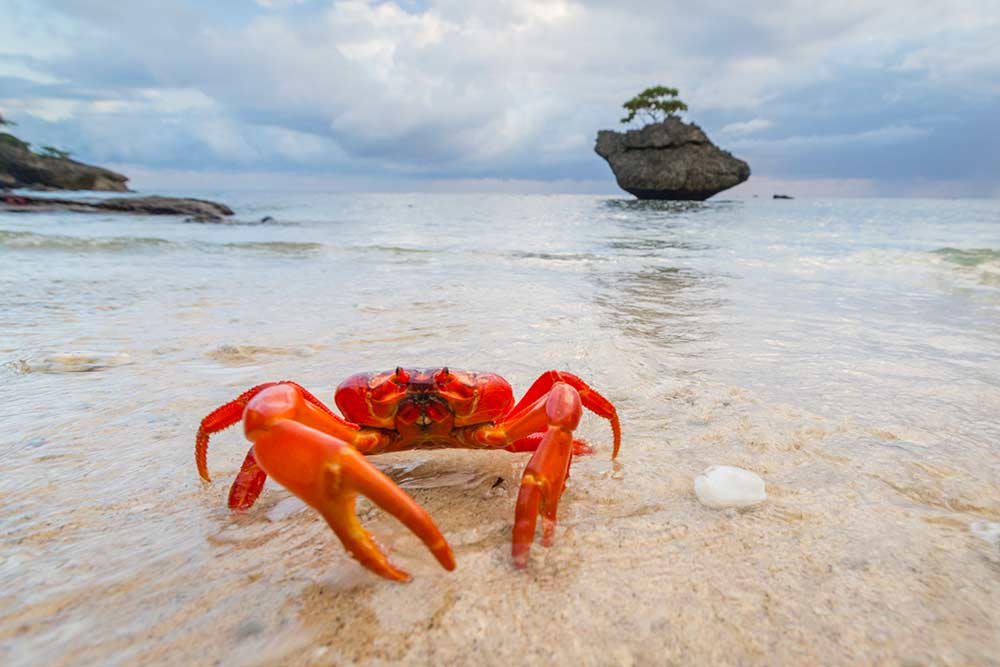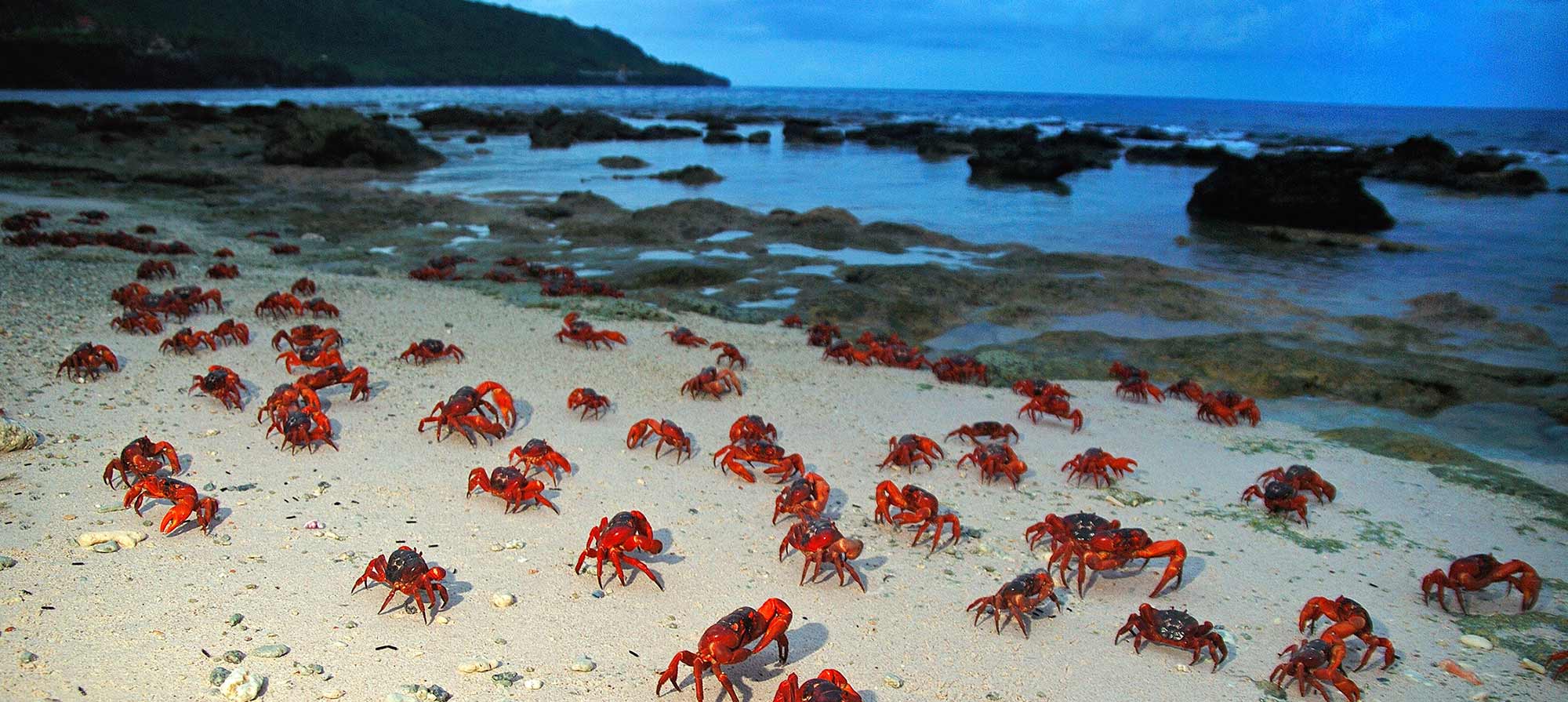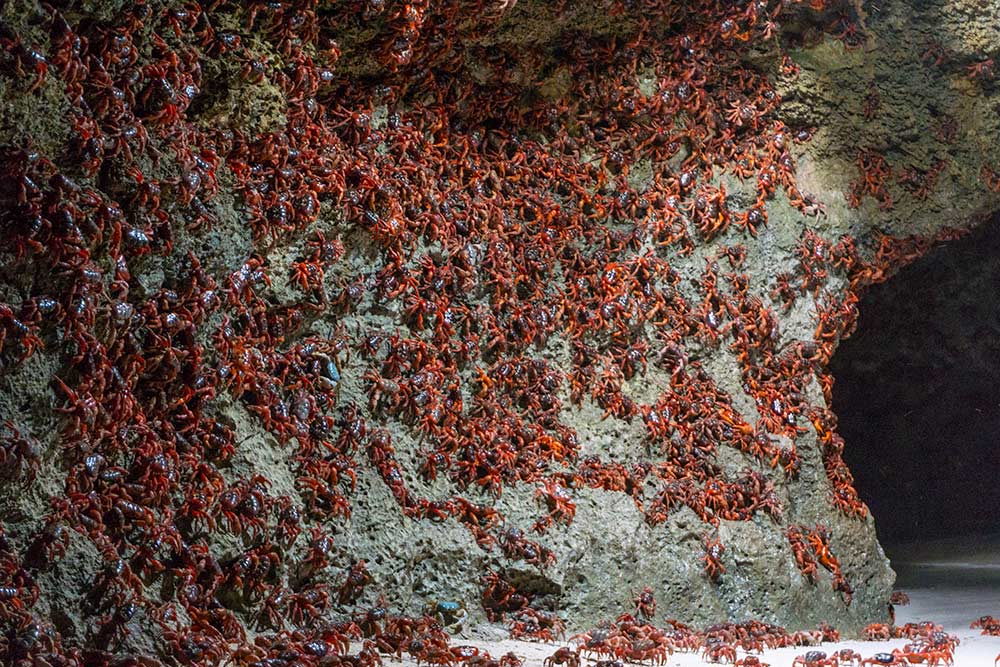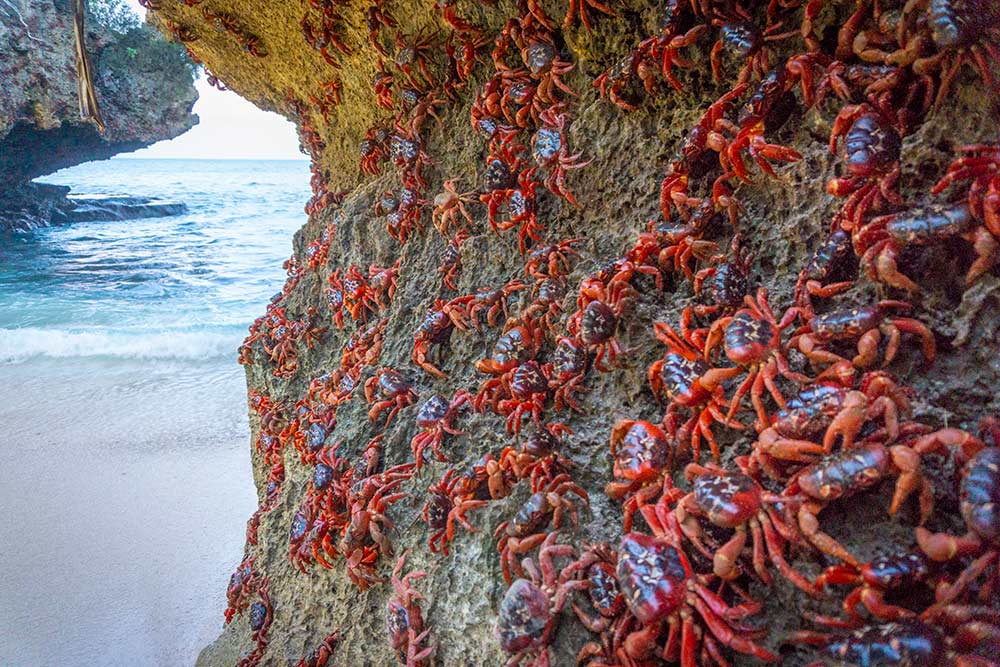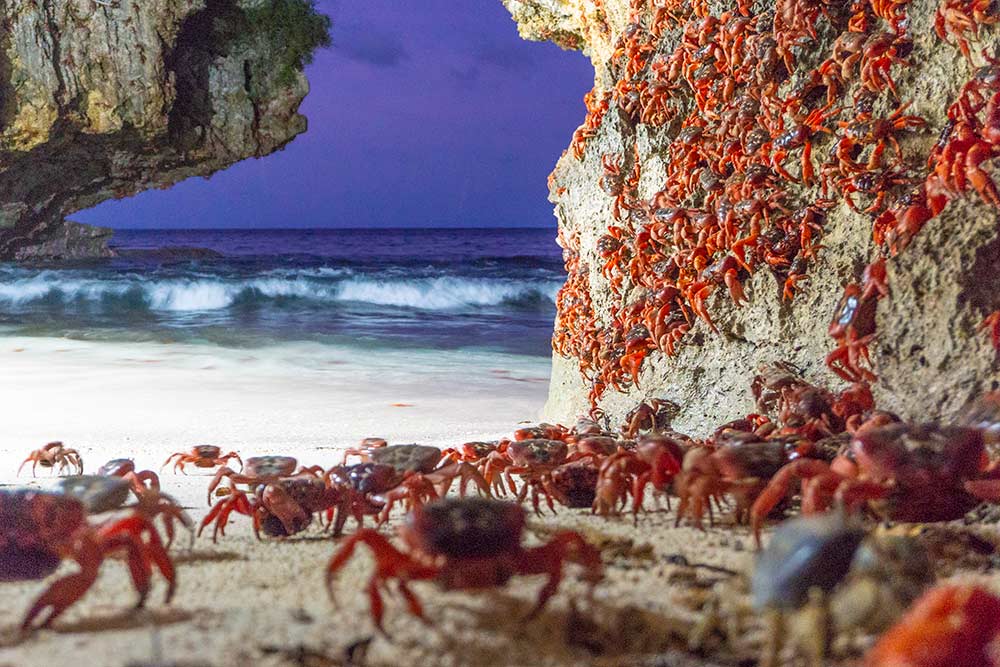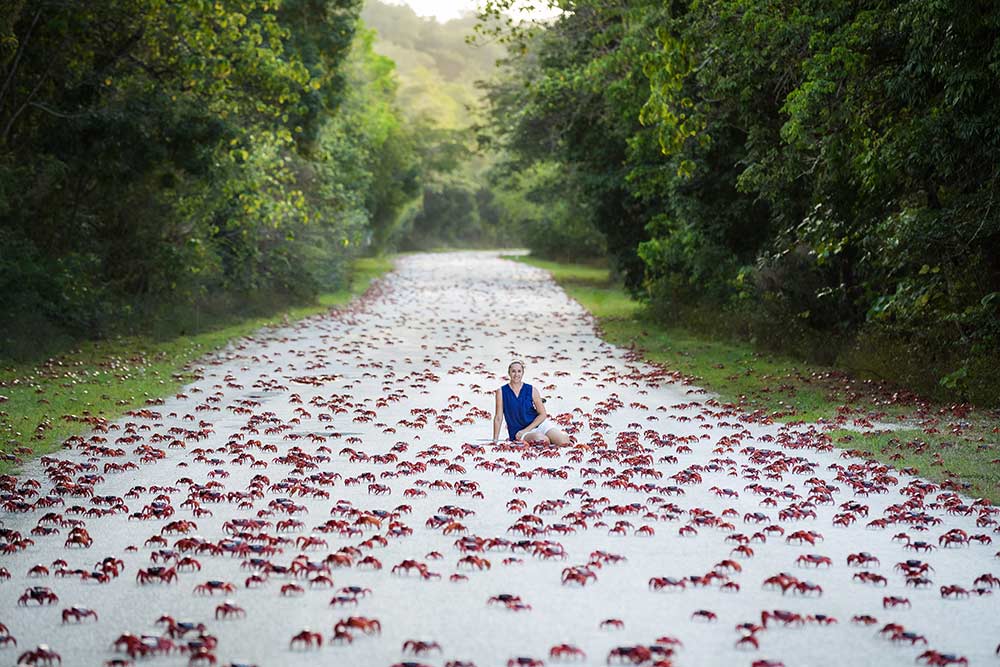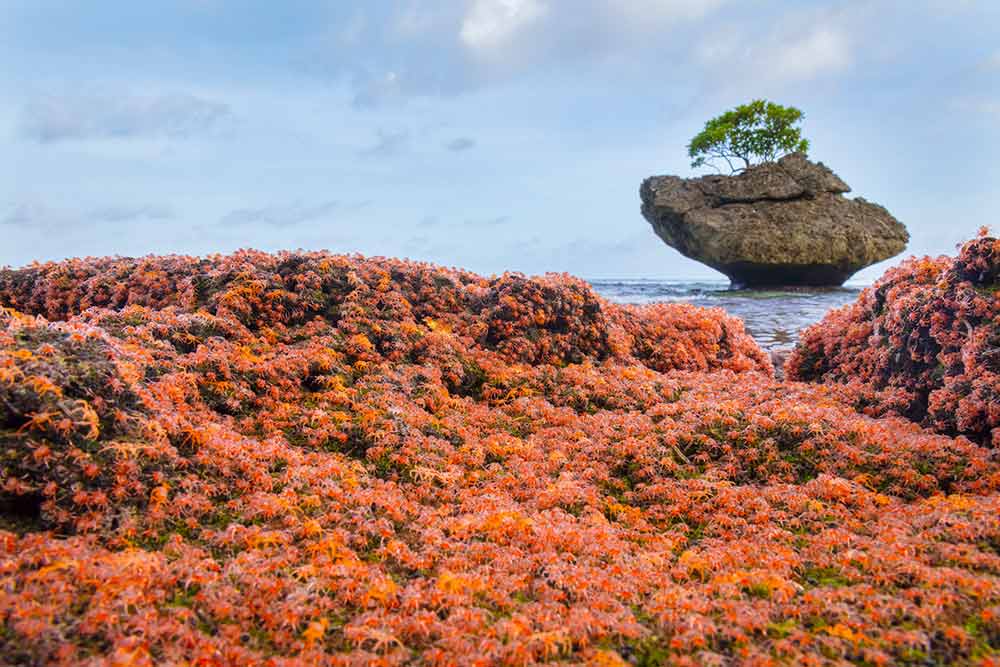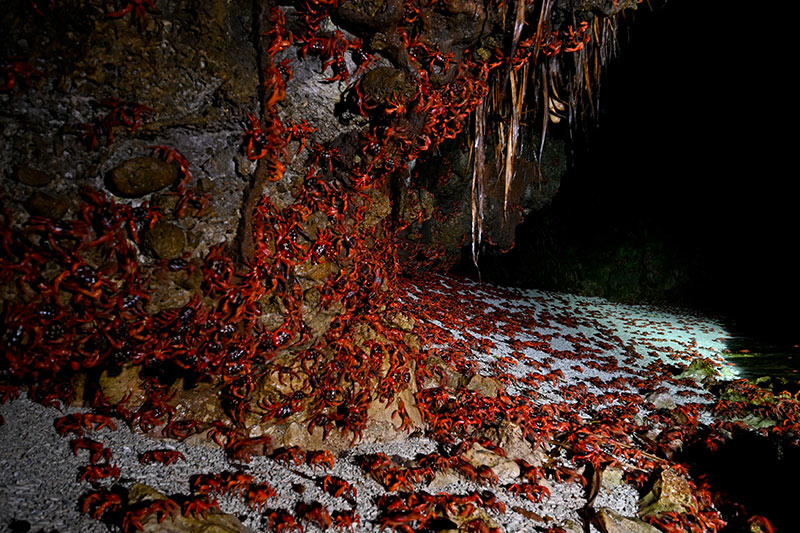Red Crab Migration
Christmas Island is world-famous for the annual Red Crab migration. Approximately 60 million red crabs leave their forest homes and migrate to the shoreline to mate and spawn. Most people experience epic animal migrations from a safe distance – Christmas Island’s red crabs allow you to immerse yourself in their monumental migration.
The expected spawning dates for 2025 are:
15 & 16 November 2025 – Dependent on long range weather conditions in the Southern Hemisphere
16 & 16 December 2025
14 & 15 January 2026 – unlikely if there has been a successful start to the annual wet season.
There are a few different stages of the migration and it is important you understand them to know what to expect during your visit.
The Migration
At the onset of our wet season (can be early – mid November), the crabs are triggered to abandon their burrows on the top plateau and head down to the lower terraces for mating. Generally the males set off first, with the females following a few days or a week later. This part of the migration is very unpredictable and very dependent on the start and continuity of the seasonal rains. The migration may become sporadic or stop if the rain stops. If the conditions are right, the crabs can be viewed migrating in the mornings (before 10am) and in the later part of the afternoon (3.30pm onwards). There are a few key locations close to the township where the crabs move and we can advise you of these. We do recommend car hire as this allows you to continue to visit these locations at different times of the day and increase your chances of witnessing crabs on the move. There could be a window of 10-14 days of crabs on the move, again, dependent on the rains. If you plan to travel for this part of the migration, we recommend a minimum 7 day stay to increase your chances of a successful viewing. Crabs may be viewed on our normal suite of tours.
The Spawning
This is the only part of the migration that is predictable. The female crabs need to drop their eggs into the sea using very specific tides, which can be predicted. There are generally 2 consecutive mornings in November and/or December. The dates change each year and where these tides fall in the month determines the greater likelihood of there being either a November or December spawning, or possibly both months. They start dropping their eggs at about 4am, and stop as the sun rises. Once they have delivered their spawn to the sea, they then head back up to the forest. Spawning tours can only be operated on the mornings of those specific dates. A shorter stay on the island is possible, depending on the flight options.
The Red Crab Migration Sequence:
- Males start migrating to the lower terraces and dig burrows (approx. 4 weeks prior to predicted spawning dates). First wave.
- Females migrate to the lower terraces and mating takes place (approx. 2 weeks prior to spawning dates). Second wave.
- Males then leave the females in the burrows to gestate the egg mass and migrate back to the upper terraces. Third wave.
- Females deposit eggs into the ocean on the spawning dates and migrate back to the upper terraces. Forth wave.
- Approx. 21 days after spawning event, baby red crabs may return en masse. Fifth wave.

